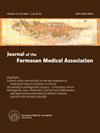COVID-19大流行后台湾儿科护理系统的恢复能力丧失。
IF 2.6
3区 医学
Q1 MEDICINE, GENERAL & INTERNAL
引用次数: 0
摘要
在 COVID-19 大流行期间,台湾的儿科医疗系统面临着有史以来最严重的儿科住院医师短缺问题。这篇综述调查了造成这一短缺的原因、后果以及潜在的解决方案。2020 年至 2023 年期间,儿科住院医师的招聘率下降了 27.3%,增加了儿科主治医师的工作量,并可能导致儿科患者的健康状况恶化。与韩国和日本相比,台湾的新生儿死亡率最高,出生时预期寿命最低。此外,台湾 "国民健康保险"(NHI)支付给医院儿科医生的费用只有当地诊所的一半,这阻碍了儿科医院医生的吸引力。为了维持儿科医疗系统的发展,政府可以考虑按照诊所的收费标准直接补偿儿科医生,并过渡到按人头付费系统。系统性建议包括提高医疗支出占国内生产总值(GDP)的比例,以及修订《国家医疗保险法》以取消全球预算支付系统。管理由此增加的财政责任可能涉及提高税收占国内生产总值的比例。实施这些措施可以加强儿科医疗系统,防止儿科住院治疗崩溃。本文章由计算机程序翻译,如有差异,请以英文原文为准。
Loss of resilience in Taiwan's pediatric care system after the COVID-19 pandemic
During the COVID-19 pandemic, Taiwan's pediatric healthcare system faced its most severe shortage of pediatric residents in history. This review investigates the causes, consequences, and potential solutions to this shortage. Between 2020 and 2023, the recruitment rate of pediatric residents dropped by 27.3%, increasing workloads for attending pediatricians and may worsening health outcomes for pediatric patients. Compared to South Korea and Japan, Taiwan has the highest neonatal mortality rates and lowest life expectancy at birth. Additionally, Taiwan's National Health Insurance (NHI) pays pediatricians in hospitals half of what it pays those in local clinics, hindering the attraction of pediatric hospitalists. To sustain the pediatric healthcare system, the government could consider directly compensating pediatricians at clinic rates and transitioning to a capitation payment system. Systemic recommendations include increasing health expenditure as a percentage of gross domestic production (GDP) and amending the NHI Act to eliminate the global budget payment system. Managing the resulting increase in financial responsibility could involve raising tax revenue as a percentage of GDP. Implementing these measures could strengthen the pediatric healthcare system and prevent a collapse of pediatric inpatient care.
求助全文
通过发布文献求助,成功后即可免费获取论文全文。
去求助
来源期刊
CiteScore
6.50
自引率
6.20%
发文量
381
审稿时长
57 days
期刊介绍:
Journal of the Formosan Medical Association (JFMA), published continuously since 1902, is an open access international general medical journal of the Formosan Medical Association based in Taipei, Taiwan. It is indexed in Current Contents/ Clinical Medicine, Medline, ciSearch, CAB Abstracts, Embase, SIIC Data Bases, Research Alert, BIOSIS, Biological Abstracts, Scopus and ScienceDirect.
As a general medical journal, research related to clinical practice and research in all fields of medicine and related disciplines are considered for publication. Article types considered include perspectives, reviews, original papers, case reports, brief communications, correspondence and letters to the editor.

 求助内容:
求助内容: 应助结果提醒方式:
应助结果提醒方式:


